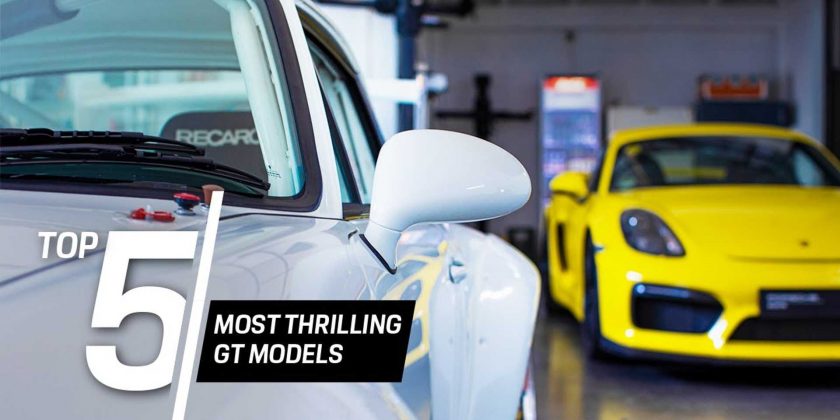Which one is your favorite Porsche GT model?
After a nine-month hiatus, the Porsche Top 5 series is back for another season. For those unfamiliar with it, it’s the Stuttgart-based company’s online video sequence which takes a look at different models of the brand from its entire history. Judging by the views and reactions so far, it’s something Porsche fans really enjoy and we are excited to see another season has just begun.
The first episode of this new season takes a look at Porsche’s five best and most thrilling GT models. The video is just 3:42 minutes long and it won’t waste too much of your time so make sure to take a look at the clip at the top of this page.
It starts with one of Porsche’s greatest cars currently on sale – the 718 Cayman GT4. If we have to describe it in just four words, it’s a road-legal race car. And with 420 horsepower and a 0 to 62 miles per hour (0-100 kilometers per hour) acceleration, it’s a pretty quick one.
Next is the 911 GT3 from the 997 model generation. One of the cars that will always have a place in our hearts with its screaming 3.6-liter flat-six engine, generating 415 hp. Plus, clever aerodynamics make it suitable for both the track and the public roads.
But before this model, Porsche had the 911 GT2 from the 993 generation. It’s the third car in this video and it’s probably safe to say it was the brand’s most hardcore road-legal car at the time. It was lighter, more powerful, and faster than the 911 Turbo.
For the next car, Porsche takes a look at the race track where we find the 911 GT1, of which just fewer than 30 examples were assembled through three model years. It’s a true mid-engine car with an astonishing 0-62 mph (0-100 kph) time of just 3.1 seconds.
For the number one spot, we have to travel further back in time where we find the 356 B 2000 GS Carrera GT. It featured many body components made of aluminum, which helped it become a very successful race car at the time.
Source:
Porsche on YouTube
Source: Read Full Article
